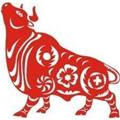Renato Borghetti
Gaúcho
Tracks:
1. Milonga do Coração
2. Valsa do Coroa
3. Rasgando em Dobro
4. Kilometro 11
5. Bailinho na Capela
6. Entardecer no Pontal
7. Debochado
8. Pra que "Esse" Bemol?
9. Fazendo Jogo
10. Chamando os Cachorros
11. Para que Tu Saibas
2. Valsa do Coroa
3. Rasgando em Dobro
4. Kilometro 11
5. Bailinho na Capela
6. Entardecer no Pontal
7. Debochado
8. Pra que "Esse" Bemol?
9. Fazendo Jogo
10. Chamando os Cachorros
11. Para que Tu Saibas
♫☆`*♥¸¸.•*¨*•♫☆`*♥¸¸.•*¨*•♫
♫☆`*♥¸¸.•*¨*•♫☆`*♥¸¸.•*¨*•♫
Renato Borghetti´s music is unusual in Brazilian recording for being so firmly centered in the folkloric elements of his native Rio Grande do Sul, in the southernmost region of Brazil, which shares a border with Argentina. Music of this area is often associated with the traditional people of Rio Grande do Sul, the "gauchos", and with the accordion instrument. The accordion may be best known in Brazilian music as important to music from the northeastern section of Brazil – but the southern area from which Renato Borghetti hails has its own accordion, a button – box known as gaita ponto.
The gaita ponto – driven folk of Rio Grande do Sul, possesses great power and intensity. With that kind of music, Borghetti has enjoyed a degree of success surprising for any artist who remains faithful to his folk roots. Not that Renato Borghetti´s music is hidebound or purist: he has revised, adapted, and modernized many of the native tunes of Rio Grande do Sul; he does not shy away from more typical forms from the wide spectrum of Brazilian and global pop – samba, jazz, tango, and beyond. Each of those forms he adapts to his unique style of accordion playing.
The accordion´s journey thorough Brazilian music dramatizes the many elements and influences of Brazilian music – and society – itself. Brazilian music has so many conflicting and harmonizing influences that the painful , creative histories of pre – Columbian America, European imperialism, and post – colonial struggles can be heard in its strains. The accordion is first a European instrument , popular in many variations among working people throughout the European continent, with particularly recognizable styles rooted in southern Europe. It was the Portuguese colonists who first brought the accordion to Brazil – but twentieth – century Italian immigrants their own influences to Brazilian playing.
Brazilian folk styles of accordion playing were never, however, solely European. Accordionists quickly picked up chant – like and modal qualities from native people, violating the European dance forms; to those odd blends were added the complex, syncopated rhythms of the African slaves who became an important part of the country´s population during the Portuguese colonization. Thus did the development of Brazilian accordion music – taking place, for the most part, far from the musical centers of Rio de Janeiro and Salvador Bahia – parallel the development of more familiar Brazilian forms like samba, which also blended European dance and religious music with native influences and a powerful dose of African percussion.
Parallels with the development of accordion playing in the southern part of the United States also come to mind: in bayou and Tex – Mex culture, French folk singing and dancing, the music of later German and other immigrants to Louisiana, and black, Latin, and native American rhythms combined to make the zydeco accordion an instrument of grater heat, intensity, and power than its antecedents could ever have suggested. It is perhaps just such intensity in Renato Borghetti´s accordion playing that has made him a popular mainstream artist even as he renovates the folk sounds of Rio Grande do Sul - a success that is all the more surprising for a musician who has generally focused on instrumental rather than vocal music.
Brazilian listeners are sophisticated, at home with jazz and folk as well as with more accessible pop forms: Borghetti recorded his first album in 1984, and it was instantly successful. Later albums were even more popular; his second release, for example, was the first gold record in Brazil ever feature exclusively instrumental music. Renato Borghetti has also reached out from the older forms to samba and tango, among other styles. His playing is uncompromising in its loyalty to a folkloric past, adventurous in its openness to new ideas. by William HogelandIt is perhaps just such intensity in Renato Borghetti´s accordion playing that has made him a popular mainstream artist even as he renovates the folk sounds of Rio Grande do Sul - a success that is all the more surprising for a musician who has generally focused on instrumental rather than vocal music. Brazilian listeners are sophisticated, at home with jazz and folk as well as with more accessible pop forms: Borghetti recorded his first album in 1984, and it was instantly successful.
Later albums were even more popular; his second release, for example, was the first gold record in Brazil ever feature exclusively instrumental music. Renato Borghetti has also reached out from the older forms to samba and tango, among other styles. His playing is uncompromising in its loyalty to a folkloric past, adventurous in its openness to new ideas.
by William Hogeland
homepage

























































+Front.jpg)


















4 comments:
Miquel are you still horsing around?
Well I should be in my stable by now ... ;)
Looks to me like you're having a mare!
Wild wild horses we'll ride them someday!
Post a Comment